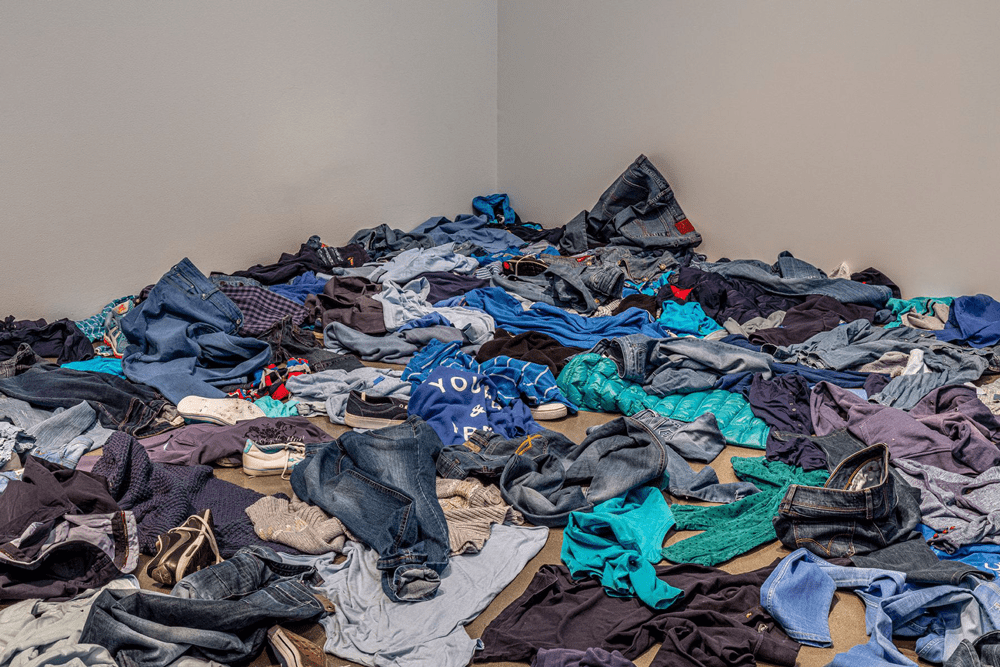Kader Attia’s debut with Regen Projects —a selection of previously exhibited and new works—continues the French-Algerian artist’s critique of modernity as embodied by Western capitalism and the mechanisms and ideologies of colonialism.
Attia has frequently examined the particularities of French-Algerian colonial history, while implicating global colonial structures writ large. “The Valley of Dreams” takes its point of departure from these conceptual grounds, with a series of three works installed in close proximity, in what is the most coherently developed portion of the show.Rochers Carrés (2007/2020), presented here as a lightbox, depicts two Algerian youths looking north across the Mediterranean from an Algerian breakwater. This is juxtaposed with the variously sized refrigerators of Untitled Skyline (2007), covered in a mosaic of mirrored tiles, evoking the image of a gleaming modern city. Like the glittering nocturnal skyline of New York City, it reflects the dreams projected upon it.The Dead Sea (2016), an installation of clothing that spreads from a corner of the gallery, conveys the perils of crossing the Mediterranean in search of refuge and opportunity. Together, these three implicate the dream of migration, wherein the sea becomes a graveyard, and the remaining traces—the very clothing off migrants’ backs—collect on the shores of Europe.

Kader Attia, The Dead Sea (detail), 2015. Courtesy Regen Projects.
Attia asserts, without much elaboration through the objects presented here, an “analogy between California, New Mexico, Texas, and North Africa,” suggesting similarities of climate and patterns of migration and its attendant dangers, from which we may draw inferences regarding the cross-border disparities and analogies between sites of colonial and neocolonial relations.
The remaining works in “The Valley of Dreams” (all dated 2020) reprise various aspects of Attia’s critique of colonialism and interest in the notion of repair. A series of Berber ceramic vessels, once shattered, now repaired with a brilliant blue epoxy—the color selected for its association with the Tuareg people—emphasizes Attia’s interest in the Japanese tradition of kintsugi—the repair of pottery while preserving the visible scar. This same blue pigment appears along the folds of kraft paper—discarded powdered milk packages delivered to North Africa by NGOs—that has been crumpled and spread out to resemble what might be a topographical map.
Yet, Attia does not adequately address the context of Southern California or the neocolonial structures of the US The strength of postcolonial analysis derives from elaboration of the particularities of site, which Attia has done elsewhere—and here, in relation to North Africa and Europe. Though parallels from varied examples may be drawn—and the similarities between migration to Europe and the US are well observed—the lack of research on the specifics of this site makes this exhibition feel like an import.


